Ah, Lotus. Is there anything you can’t do? I mean, beyond economic solvency, a sound business model, sourcing power plants with a modicum of reliability, and obtaining gearboxes with more than a passing glace of trustworthiness?
I kid, I kid! That’s the Lotus of old.
Nowadays, they produce things like the Lotus Evora Sport 410 – and great googly-moogly is this thing a ride!
Stubborn Innovations
Back when Anthony Colin Bruce Chapman was running things, Lotus Cars Ltd. (Hethel, England) was a place of extremes. Chassis construction methods nicked from jet fighter designs combined with engines sourced from fire fighting water pumps. Suspensions so feather-like and responsive the cars couldn’t do anything but grip; mingled with transmissions so lightweight and insubstantial they had the lifespan of a fruit fly.
There was no middle ground. It was all brilliance amalgamated with absurdity.
Don’t get me wrong, Chapman was an outright genius when it came to chassis design and set up, and he is still one of the all-time great automotive engineering innovators. But he was also maddeningly cheap, mean-spirited when it came to the company checkbook, and pretty chuckle-headed when it came to choosing sub-contractors and parts suppliers.
Winds of Change
Today, things are very, very different. They kept the good stuff – the fanatical obsession with weight savings, benchmark ride and handling – and they ditched the most questionable stuff; i.e. engines.
Long gone are the days of weird, semi-functional French engines. Now, Lotus cars are motivated by Toyota sourced power plants. Sure, there might be better Japanese mills out there in terms of performance, but when it comes to reliability . . . well, reliability, thy name is Toyota! I’m not sure who in the Lotus organization came up with the idea of going with Toyota, but they deserve a knighthood.
No. Seriously.
The new Lotus Evora Sport 410 is maddeningly beguiling.
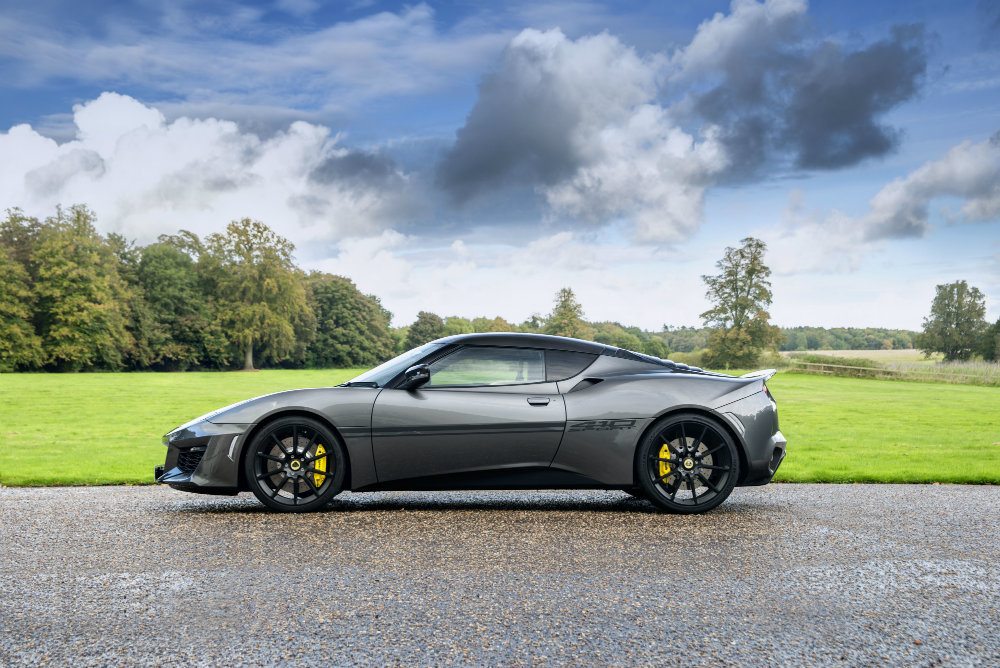
“Lotus has surpassed itself with the Evora Sport 410, and it defines a period in which we are producing our best ever cars,” comments Jean-Marc Gales, CEO of Group Lotus plc. “We have achieved so much in the development of the Evora platform, and the Sport 410 is possibly the most accomplished car we have ever built.” Photo: Lotus Cars USA Inc.
Featherweight Fury
As one would expect, the Evora Sport 410 is a very light car, tipping the scales with a 1,270 kg dry weight, or about 2,800 pounds. Close to a Miata, in other words. There’s nose-to-tail carbon fiber components fitted as standard. And, as one would expect, the aerodynamics are top notch as well, with downforce doubled at higher speeds.
All this results in a 0-60 time of in 3.9 secs and a top speed of, gulp, 190 mph.
Lotus says this is a “more focused variant of the class-leading Evora 400” and I’m not going to argue with that statement.
The engine residing amidships, under the carbon fiber deck lid, was developed through the Lotus 3-Eleven project. The Evora Sport 410’s supercharged, 3.5-liter 6-cylinder plant cranks out 410 horsepower at 7000 rpm and 410 Nm (302 lb-ft.) of torque at 3500 rpm. I’m guessing that’s how they got the 410 name?
The intercooler is an integrated water-to-air piece kit and helps tip the car well over the 300 horsepower/ton benchmark. Lotus says the total power unit is a “vital contribution to the Evora’s credentials.” Really? Ya think?
Transmission Options
The Sport 410’s mill is mated to a choice of two transmissions. The purist oriented six-speed manual gearbox, which features a low-inertia flywheel, and a Torsen-type limited slip differential (LSD). This diff gives you better traction, and faster exit speeds when cornering. Natch.
Transmission option #2 is a six-speed automatic that utilizes an optimized gearbox ECU for ultra-fast changes. Gear selection can be made via lightweight aluminum paddles mounted to the steering wheel. Maybe. I know these things are getting better (really impressive actually) but a slush-box in a Lotus?
I need to freshen my mint julep and sit down before I get a case of the vapors.
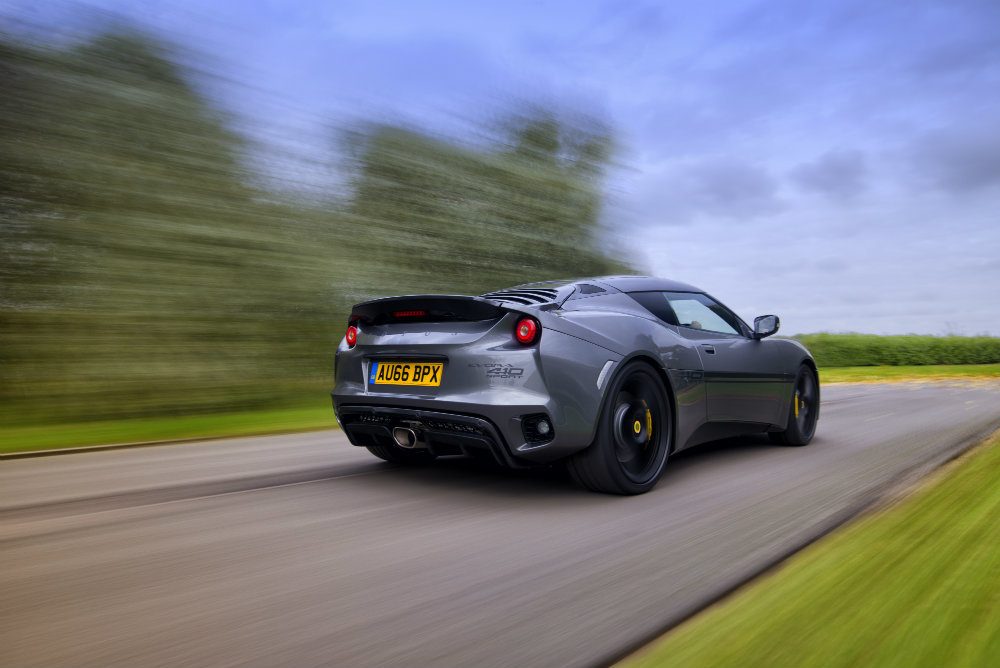
Lotus engineers lowered the center of gravity, improving the suspension calibration and geometry. The re-valved dampers provide an increase in compression and rebound, while the rise in spring rate and reduced ride height (5mm) allow for more control and greater comfort. Photo: Lotus Cars USA Inc.
Pushing Limits
The Sport 410 also features Lotus’ Dynamic Performance Management (DPM) which, selected via a dashboard switch, provides ‘Sport’ and ‘Race’ settings. This is one of those cool newer digital things that, at the push of a button, lets you go from “Wow! Fun car!” to “Hand me that Rosary I need all the help I can get!” levels of performance.
On some cars, buttons like that are a bit of a joke; slightly altering enough settings to make your rental rocket feel more exciting. This is a Lotus. This is not screwing around.
The DPM proportionally increases throttle response, lowering traction slip thresholds, and removing understeer recognition. It allows enhanced control before the system intervenes. It also activates the Evora Sport 410’s variable-pressure exhaust system, sharpening performance and hardening the engine’s note at higher speeds.
Unique Styling
Naturally, the Lotus Evora Sport 410 is not going to be riding around on steelies. The Sport 410 is equipped with bespoke, ultra-lightweight forged aluminum wheels and Michelin Pilot Sport Cup 2 tires. The 10-spoke forged wheels reduce un-sprung mass and have been produced specifically to work with the Sport 410’s chassis.
The Evora Sport 410’s carbon fiber sports seats are trimmed with standard Alcantara, along with the steering wheel, lower dashboard, transmission tunnel, and center console. Which, I agree looks great, but is also kind of a maintenance hassle to keep it looking fuzzy and nice.
Other interior niceties include optional color coded interior components, attractive one-piece door trim panels finished in Alcantara with contrasting stitching, the deletion of door arm rests and stowage pockets, the relocation of tailgate and fuel filler release buttons, and the removal of speakers – if an entertainment system is not specified. There’s also an integrated touchscreen entertainment system available that includes iPod connectivity and Bluetooth functionality.
Now, the bad news . . .
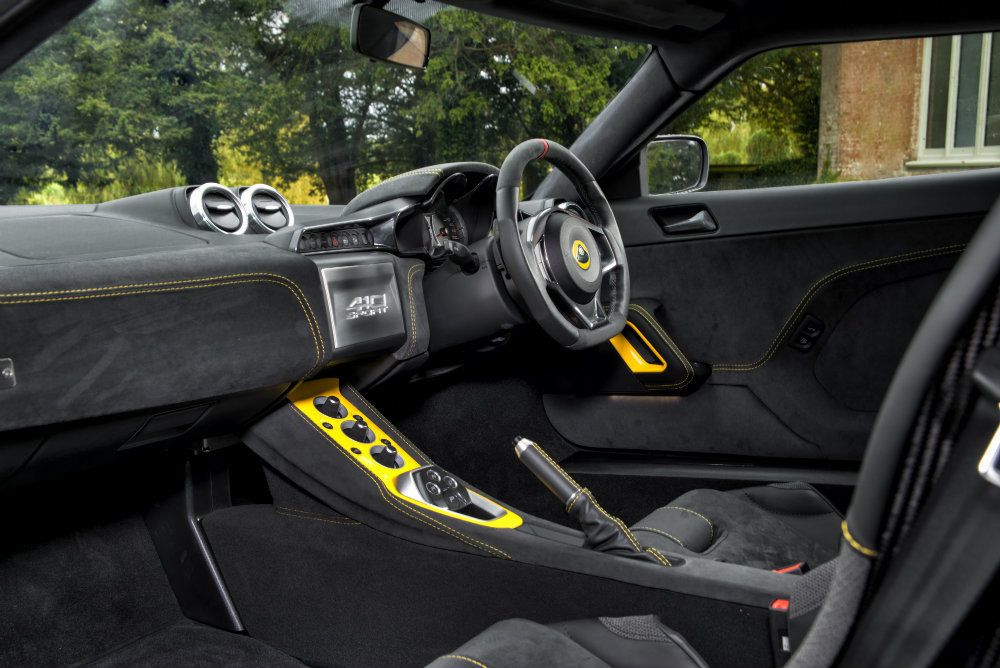
The Sport 410’s cabin received close attention during its development. In a deliberate nod to the Esprit GT3, the Evora’s interior has subtle design cues, such as the optional color coded interior components, which reference the car’s lineage. Photo: Lotus Cars USA Inc.
Pricing & Availability
The Lotus Evora Sport 410 is limited to a global production run of 150 vehicles per year, so get in line now. It’s on sale in Europe and other world markets as we speak. An “adapted” version of the Evora Sport 410 for the North American market will follow in the summer of 2017. (Hurry up! Hurry up! Hurry up!)
Now, the really bad, but inevitable news.
Price? €108,500 ($120,890.70 USD) which, okay, I can see. That’s not that outrageous, but it’s still a lot of scratch. Which brings me to my inevitable refrain to management here: Can I have a raise?! Please?!
Tony Borroz has spent his entire life around racing antique and sports cars. He means well, even if he has a bias towards lighter, agile cars rather than big engine muscle cars or family sedans.
Lotus Evora Sport 410 Gallery

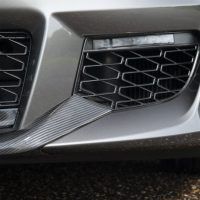

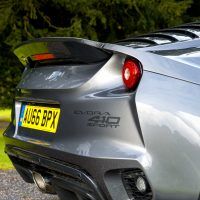
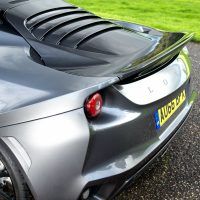
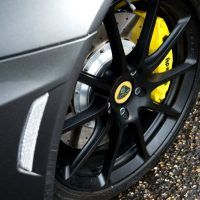
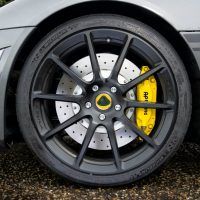
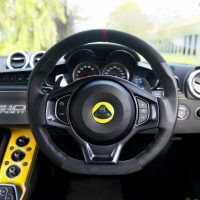
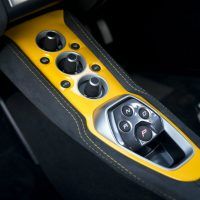
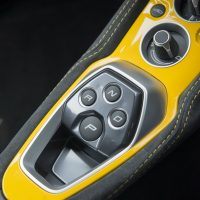
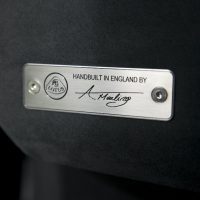
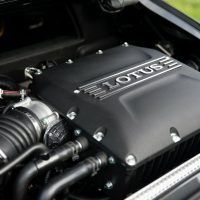
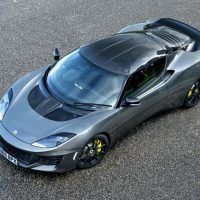

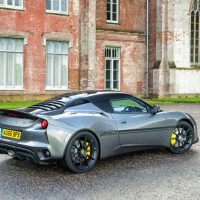
Photos & Source: Lotus Cars USA Inc.
http://www.automoblog.net/2016/11/05/lotus-evora-sport-410-new-benchmarks/
No comments:
Post a Comment